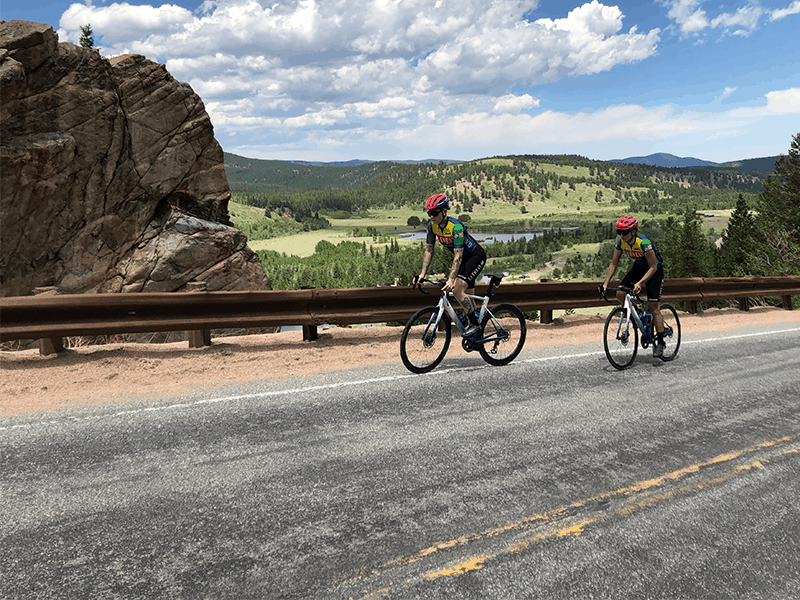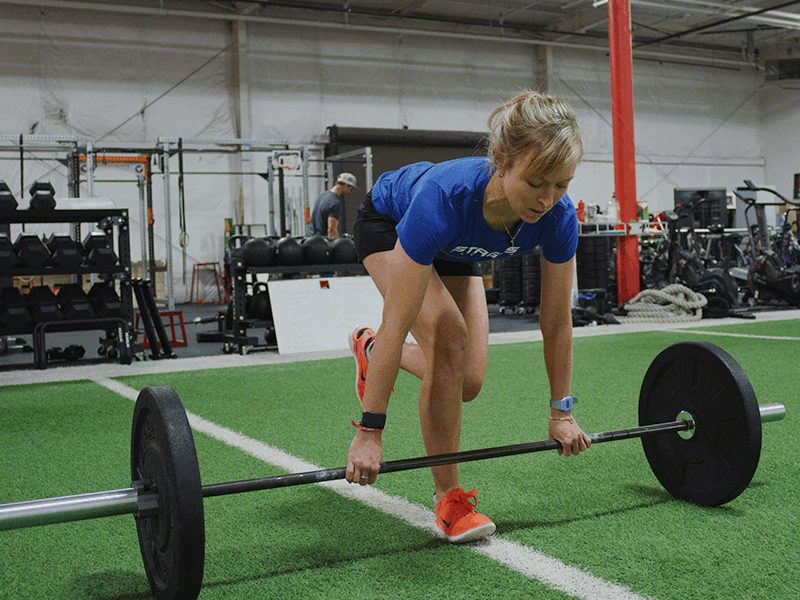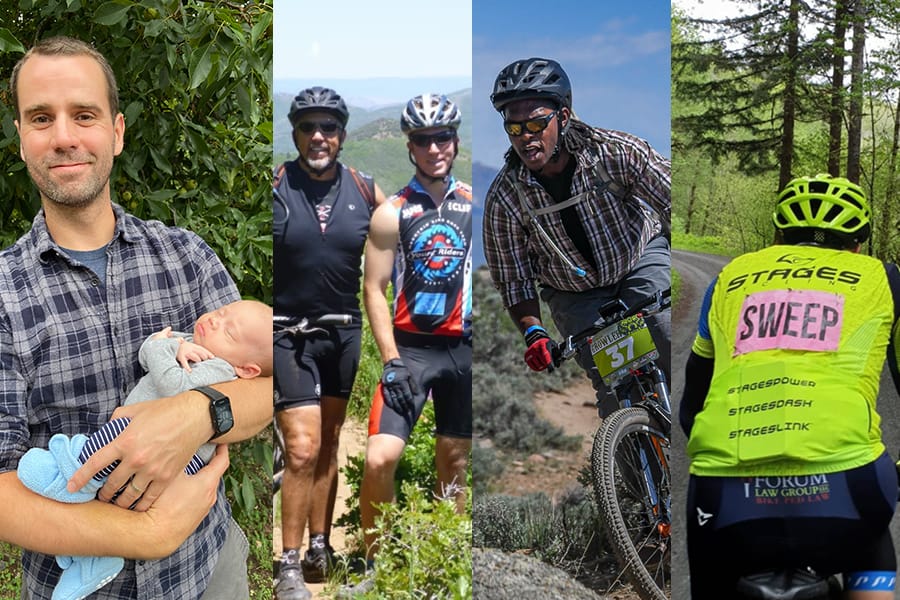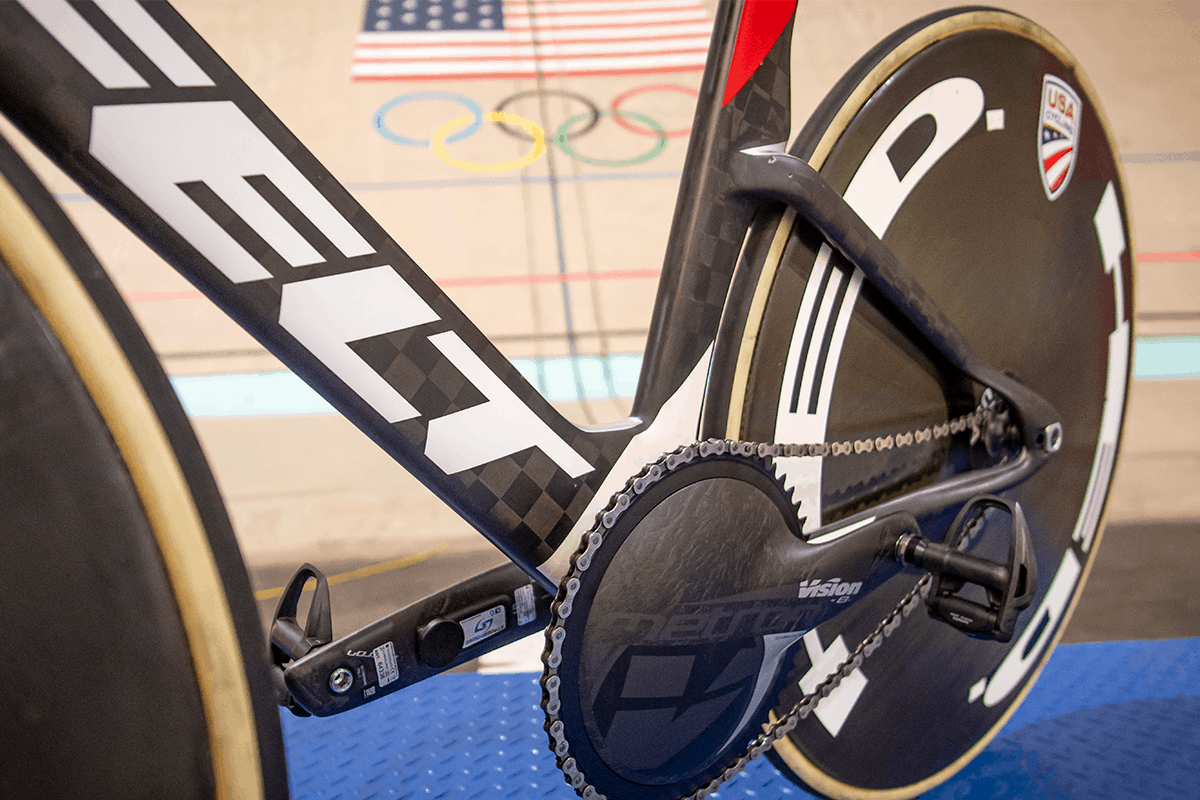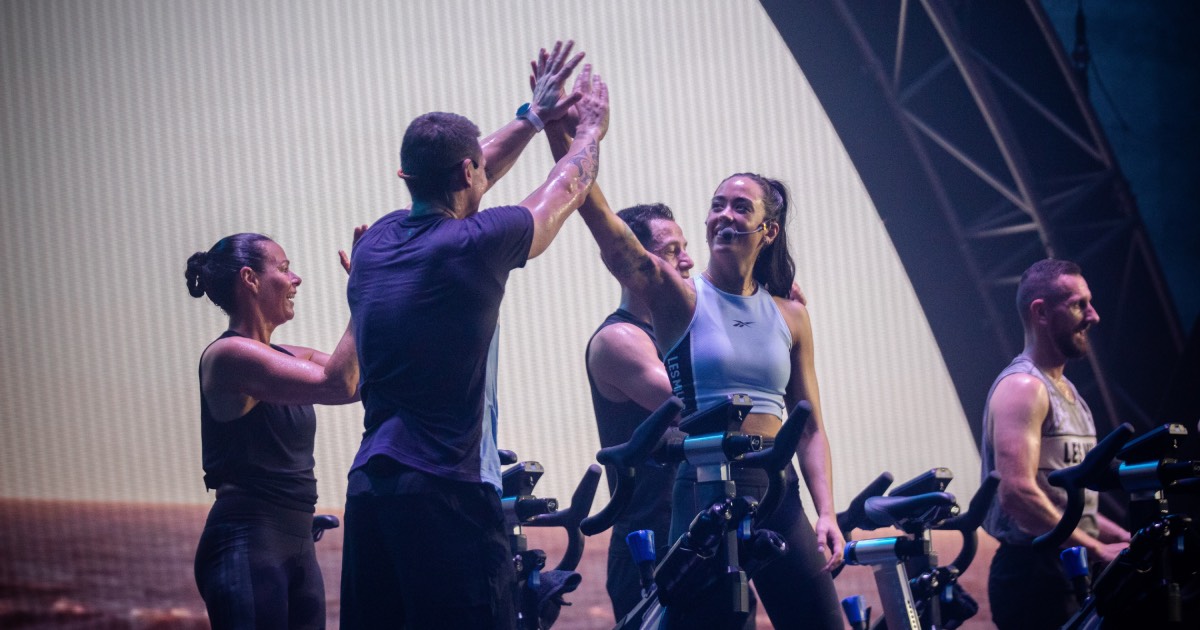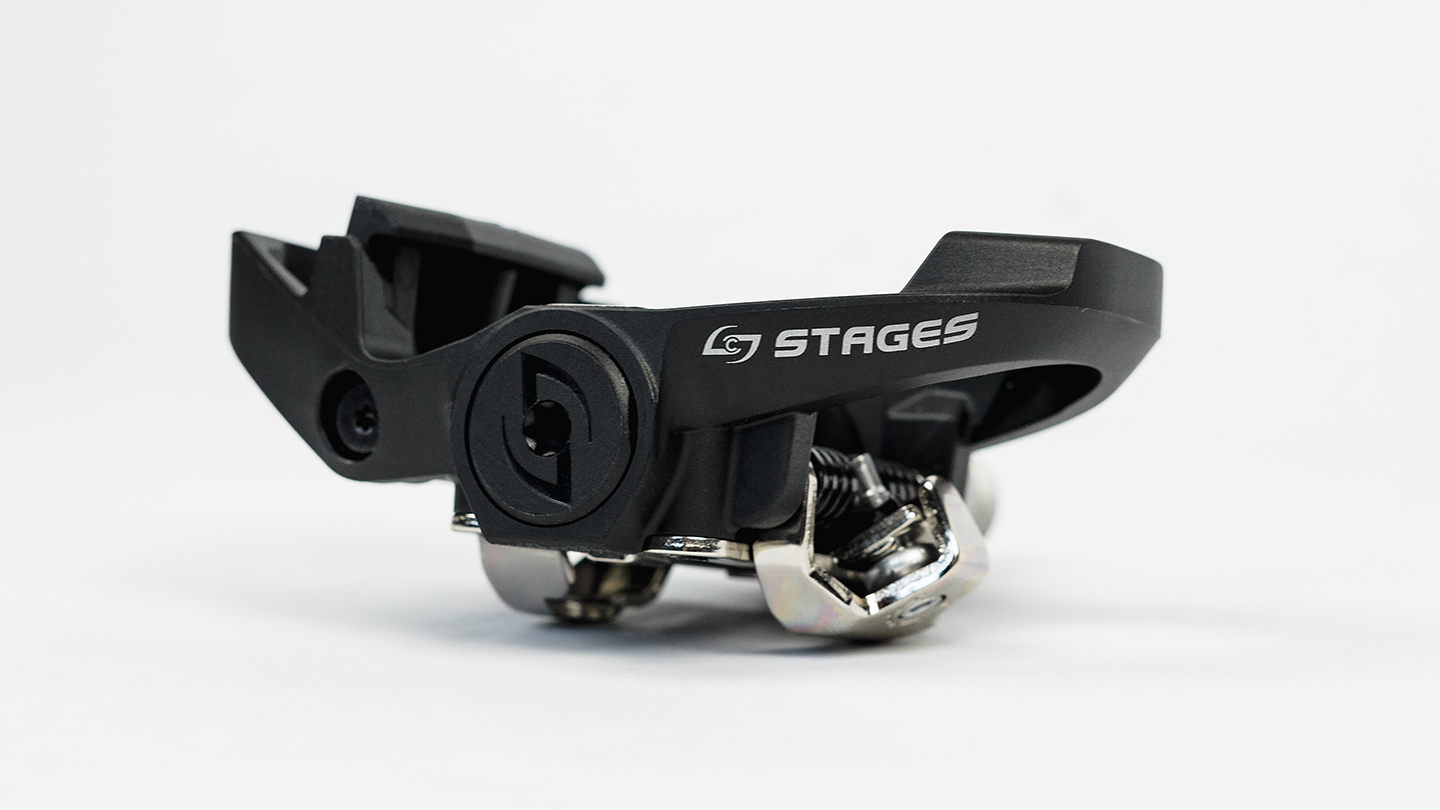WHY IS STRENGTH TRAINING IMPORTANT FOR CYCLING?
By: Dunte Hector
Dunte Hector is a Product Manager for Stages Cycling and independent strength & conditioning coach. His coaching specialty is returning to sport after injury and his training philosophy is drawn from Frans Bosch’s research on strength training as coordination development. He has held NSCA’s Certified Strength & Conditioning Specialist (CSCS), StrongFirst SFG kettlebell instructor, Functional Movement Systems FMS-2, and ACE Certified Personal Trainer credentials at various intervals since 2011. He raced on the road in college, rides downhill recreationally, and is in training for crit races in Boulder, CO. He considers himself reasonably strong around weights, half-fast on a bike, and super geeky about training.
When I ride an indoor workout using my Dash, my favorite color is purple.
In case you're not using a power meter or SB20 in training, purple is your NMP zone -- neuromuscular power, way over your FTP. It's the power people are talking about when they refer to fast-twitch muscle fibers and huge sprints. While FTP is threshold also called sustainable power, the reference point for almost all of your cycling training, NMP is your ceiling, the absolute most power you can produce.
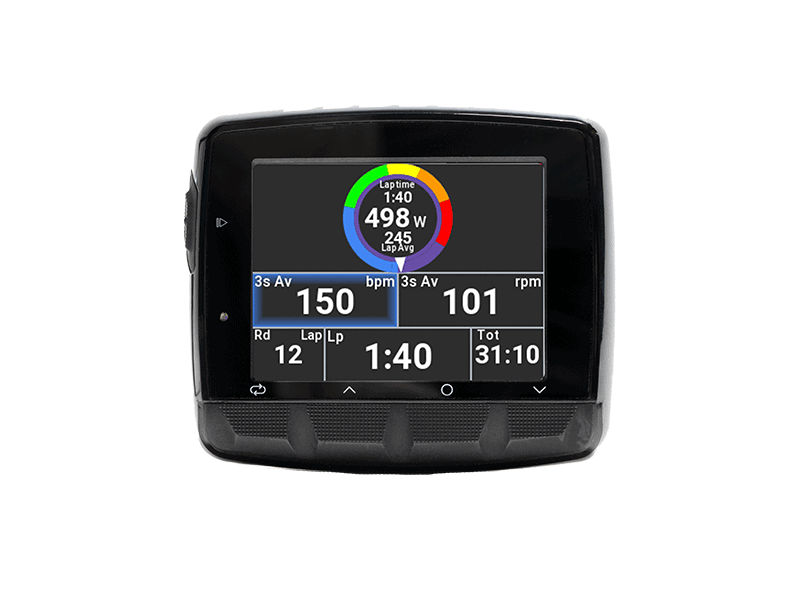

If you spend hundreds of hours on the bike nudging your FTP up, there will be tiny incremental increases in your NMP as well. But if you can knock your NMP up, your FTP will jump up as well. Obviously the best way to *apply* increased NMP (or FTP for that matter) is to "ride your bike, ride your bike, ride your bike", but what's usually not obvious is the best way to *build* your NMP.
That's where strength training comes in.
There are a lot of awesome articles from some of my favorite bike publications about the value of strength training for cyclists. The typical reasons include producing more power on the bike, being better equipped to hold your optimal on-bike position, and preventing typical overuse injuries. All of those are valid and important reasons to add a little strength work to your training regimen. If all you did was add some lunges and pushups or a few group fitness classes to your training program, you would be doing a world of good for your body in general -- but you're probably not improving your performance enough to feel all the way bought in.
So today, I want to look at the strength training benefits that directly contribute to your cycling performance: improving neuromuscular coordination AKA "raising the ceiling" on your power production, supporting a larger training load for superior fitness gains, being more resistant to both crash-related injuries and illness, and looking and feeling great for all those hours off your bike. Don't leave performance on the table or second-guess the value of strength training anymore. You need less training time than you think to get strong and your gains on the bike are greater than you might imagine.
Neuromuscular Coordination
Training Load & Fitness Gains
Strength Training for Injury Prevention
Look Good, Feel Good
Okay, Let's Lift!
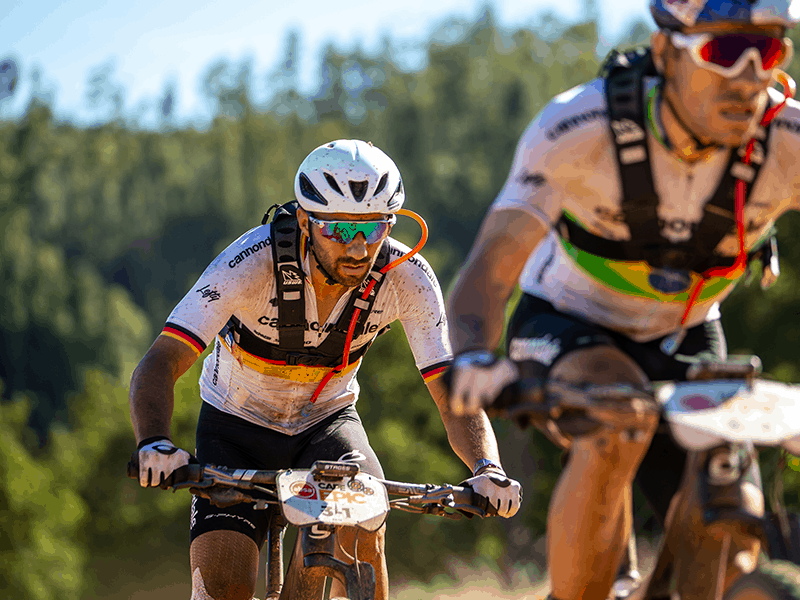

NEUROMUSCULAR COORDINATION
In physiology, a popular tome is "what fires together wires together." When you’re thinking "go go go!" in response to an unexpected change in pace on the road, that phrase refers to how the signal moves from brain to legs. Your neural system is the set of wires that carries signals from your brain to your muscles, tendons, and ligaments and back again. When your coordination improves, it means a select set of wires gets optimized to do a particular job. When those wires are optimized to do the job, signals travel faster, impulses (the command to a muscle to squeeze) are stronger, and muscular contractions are more powerful.
That last part is what we're after: more powerful muscular contractions. Power, as measured by a power meter, is the product of torque applied to the drivetrain and angular velocity, which is how fast the drivetrain spins, AKA cadence when measuring power at the crank. The more powerfully your glutes, quads, and calves can contract during a pedal stroke, the more force you can apply to the pedal. Since the pedal is connected to the crank, the crank to the chain rings, and the chainrings to your cassette via the chain, that means more turning force applied to your rear wheel.
But more powerful muscular contractions don't just mean how hard you pedal one time. What makes FTP your "sustainable power" is the "sustainable" part -- and what makes something sustainable is its proportion to the most you could possibly do. To use another familiar training metric as an analogy: if you tried to operate at your absolute maximum heart rate exclusively, maybe 190bpm, you would find that your intervals are barely a few seconds long and you can only do 3-5 of them in a session with super long rest periods. But if you tried to operate at 70% of your maximum heart rate, you could probably keep up 10-20 minute intervals and repeat them on a minute or two of rest. What's awesome is that sustainable power goes up as maximums go up because it is percentage-based.
Unfortunately, there's not much science supporting raising your maximum heart rate, but there's plenty of evidence that maximal contraction force (AKA neuromuscular power) can be improved dramatically in any muscle group. You can take a maximum 5-second power, which is a good proxy for your actual maximum power, your "power ceiling", from 500 watts to 750 watts to 1250 watts using proven, reliable methods. Doing so will also pull up your FTP, maybe from 180 watts to 275 watts to 350 watts.
Don't misunderstand me. You won't magically become a diesel-engine capable of riding the field off your wheel just because you did a few heavy squats -- you still have to ride your bike to have an optimal position, you still have to do your long intervals to build specific endurance, you still have to have tactics and mental toughness to take advantage of opportunities in a race. But strength work will improve your neuromuscular coordination in less training time than *only* riding your bike ever could.
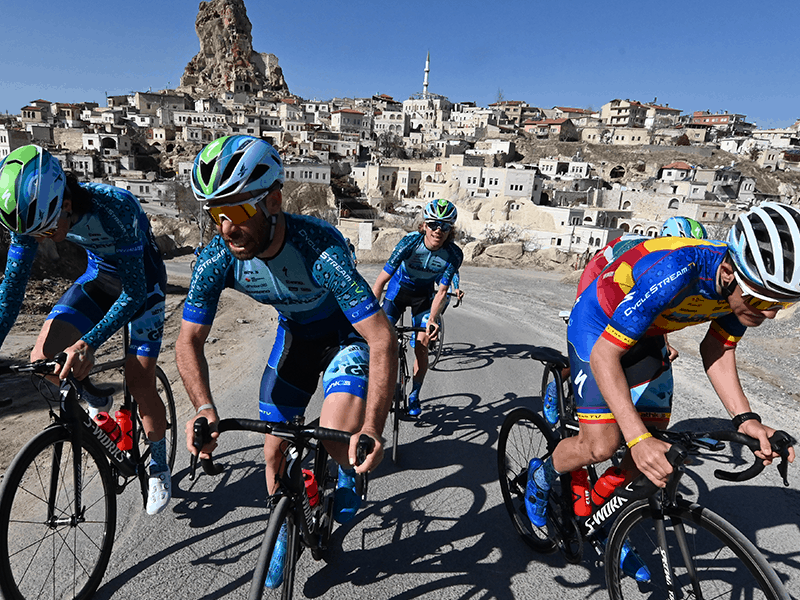

TRAINING LOAD & FITNESS GAINS
Unless you're a pro, in which case you probably have a strength coach and masseur and coach and director already, you probably have limited time to train. You also have just one fast bike in your stable for training and racing. You have to pay for your equipment, do your own repairs, and still find time for group rides, long rides, and a few intervals during the week. But maybe some of your "off bike" time could still be training time. If you have kids, there are probably a few minutes available during a weekend movie or before the scramble to get to school that aren't nearly enough for a hard ride but could be put to use.
From a recovery standpoint, there's plenty to gain from a bit of stretching and foam rolling. But most of us can't train hard enough as it is to make real fitness gains -- we don't need more recovery so much as we need more training load! In that case, strength training could be your savior. As explained above, if you can boost your neuromuscular coordination, the performance gains show up on the bike. But a set of hard bike intervals (also very good for boosting coordination) need a thorough warmup, 100% focus, and time to kit up. Comparable training stress is available with 3-5 sets of kettlebell swings or weighted lunges. That means you can get a reasonable dose of training stress from 45-60 minutes on your indoor bike (longer if you have to set up on a trainer; buy a StagesBike already!) or from 5-15 minutes right where you're standing.
That means what could have been a forced rest day, what I tend to call "life days" when life just gets in the way of a ride, can still be a good training day. If you use Stages Cycling App or TrainingPeaks to monitor your training, you know how huge the impact a 0 for training score can have on your ATL (acute training load) and CTL (chronic training load). Planned rest days are awesome and important for peak performance. Forced rest days reduce your fitness. Strength training can help you maintain or boost your fitness (depending on the volume and intensity of the session) in a fraction of the training time.
Once more: don't misunderstand me! You can't become a fit & fast cyclist without plenty of time on your bike. But beyond the direct performance benefit to power output, strength training has the bonus benefit of giving you options for keeping your training load when life gets in the way of going riding. More total training load means more fitness and more fitness, combined with sensible tapering, means more fast when it counts most.
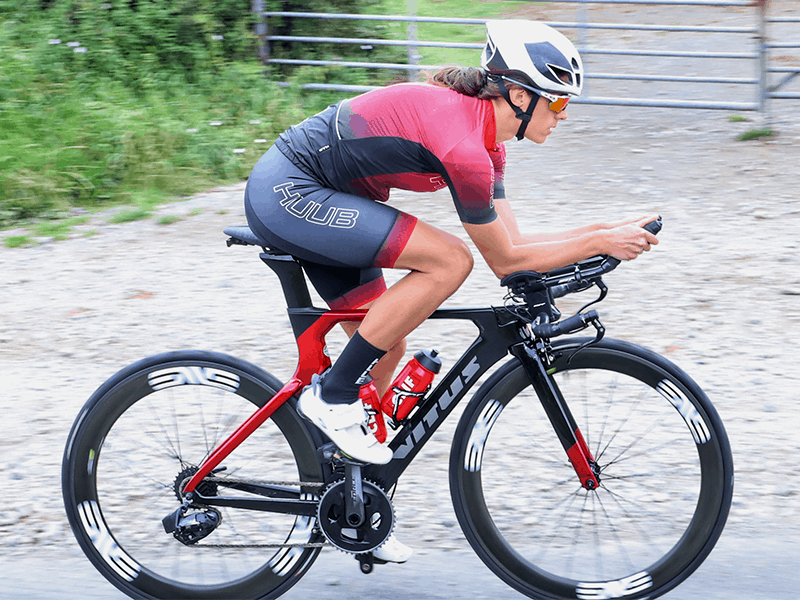

STRENGTH TRAINING FOR INJURY PREVENTION
BIG CRASH, LITTLE CRASH
If you cruise the internet, there is lots of talk about strength training for injury prevention. Those articles are absolutely right. Low cadence climbing week in and week out can do damage to your knees. A super aerodynamic position on the bike can wear out your back. Most of us are also professional desk jockeys -- despite the psychological relief and cardiovascular capacity cycling brings me, my bike position and my daily work don't do my hip flexors or low back any favors. Strength training can definitely help offset some or all of these postural afflictions.
But let's look beyond chronic pain. When I started riding mountain bikes seriously in 2017, I noticed something: you crash. A lot. I rode with fast people on difficult trails using poor equipment. That's a bad combination for someone who was ego drunk, fitness rich, and skill poor. Despite this, none of my crashes in that first year resulted in injuries. I give credit to two things: learning to fall (football, wrestling, and rock climbing in my past!) and being pretty strong. I can't overstate the value of learning to fall in helping prevent collarbone and wrist injuries. Take a tumbling class, sign up for a few weeks in the martial arts, or take a beginner rock climbing class. Learning to fall could save your life.
Anyway, this article is about strength training. Lifting weights isn't just about big muscles -- in fact, it doesn't have to be about big muscles at all. It's about coordination. Not only the neuromuscular coordination I talked about above which boosts your power numbers but also the intermuscular coordination that lets your biceps, triceps, deltoids, and trapezius work together to stabilize your shoulder when you go over the bars, for example. Intermuscular coordination is something you definitely want when your body meets tarmac because it keeps joints...joined. Also, resistance training has been shown to increase collagenous tissue density, which means your ligaments get a little tougher from the loads of strength training; to reduce response time of the golgi tendon organs, which means your tendons react to sudden loads faster; and to increase bone mineral density, which means your bone structure is "thicker" and can transmit more force. Only load bearing exercise causes those adaptations. Minimal loads pass through your spine during cycling, so it doesn't pass for load bearing exercise.
Crashing, however, passes through your entire structure quickly and unpredictably. Every crash is different, but they all involve hitting your body against something. In my view, there are no little crashes. A low side in the rain becomes a slide into the curb; a high side on the trail tends to involve rocks and tree trunks. Like good health insurance plans or body armor in downhill mountain biking, you want to have protection in place *before* you need it. Strength training is part of a cyclist's insurance plan against devastating injuries. A consistent strength training routine and the adaptations it causes can be the difference between getting right back on your bike after a fall and spending 3 months off the bike rehabbing a joint.
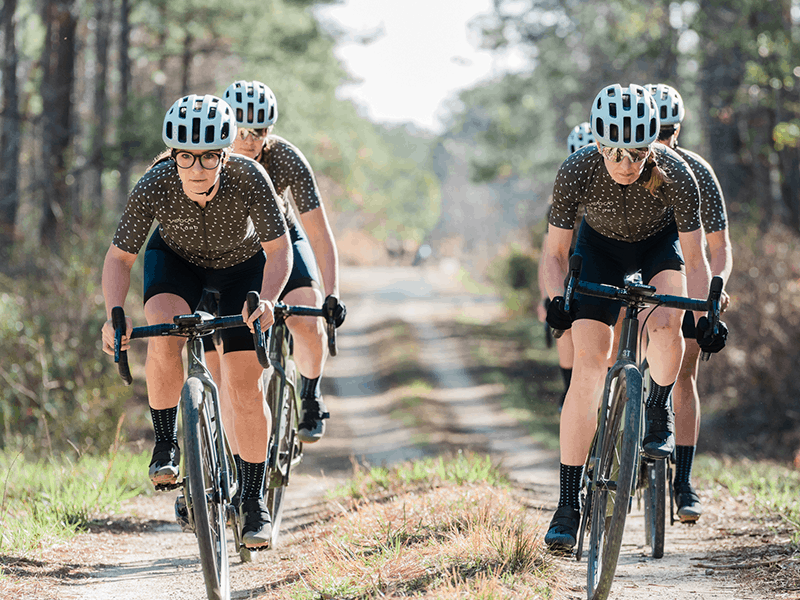

LOOK GOOD, FEEL GOOD
At a local road race, I was chatting to a friendly racer lining up that day for the first time since 2019. Self-quarantine during the COVID-19 pandemic made him reflect on cycling and life, as it did for many of us. This is a guy with a history of going fast and spending all his free time on his bike, so what he said to me was well grounded and is a valid point for all of us amateurs: "I love to ride my bike and I love to go fast, but I realized I'm not a Grand Tour, Hors Categorie-scaling pro, so I don't have to try so hard to look like one!"
We all know it, whether we admit it vocally or only in our heads: a little muscle looks good, especially a touch of definition in the upper body. Obviously your power-to-weight ratio is of critical importance whether you live in the mountains or your live for the long ride. A smart, personalized nutrition plan prepared by a sports nutritionist or Registered Dietitian is the way to go for losing fat, therefore reducing weight. A smart, personalized training plan prepared by a professional cycling and/or strength and conditioning coach is the way to go for improving performance, therefore increasing power. But once you've gotten a bit leaner and a bit stronger, don't fall for the temptation to get as skinny as possible. The potential health losses may offset the fitness gains and even if you maintain health at a super low weight, are all the sacrifices actually worth the performance benefits?
That's me on the right riding the Stages Smart SB20 Bike. Personally, I don't "look" like a typical pro cyclist (though I'm open to comparisons to Sir Chris Hoy at any time!) and that in no way reduces how much I like to ride my bike. You don't have to be waifish to ride fast (as many an old guy with tens of thousands of miles in his legs has shown me at time trials) and you don't have to give up beer *or* cookies to improve your performance. In fact, the various adaptations of strength training actually improve insulin regulation, alcohol processing, and overall metabolism. I am not suggesting you have a full keg and a dozen donuts after every ride just because you lift a few weights, but I am saying you can combine strength training with lots of riding and live a comfortable, normal life while still going fast.
Plus, what about other hobbies? We all need them, whether we hide them under the title "cross training" or we openly admit we like to do other things than ride a bike sometimes. I love to snowboard. Going fast means I have to be ready to stop fast. Stopping fast takes leg, hip, and back power. If I don't stop fast, I go tumbling down the mountain. That takes knowing how to fall (seriously, learn to tumble!) and having the upper back and shoulder strength to not get hurt. I have a taste for beach volleyball, downhill mountain biking, and scrambling hikes as well, all of which require some upper body strength. Strength training is the best way to keep my body ready to do those things recreationally without taking time away from riding my bike.
When thinking about all the other aspects of your life beyond cycling, from backyard games with your kids to carrying groceries up stairs, from helping push a broken down car off the road to your other sporting hobbies, keep in mind that smart strength training is by far the biggest bang for your buck. In my kettlebell organization, we say we swing heavy bells "in case civilization is temporary." I would offer this complementary line: cyclists should strength train "in case life goes on beyond the bike."
OKAY, LETS LIFT!
Maybe you're convinced strength training isn't such a bad use of time after all. Maybe you're ready to add it to your training regimen, yet you have some questions.
What exercises should I do?
How often should I strength train?
Should I strength train if my A race is soon?
Do I need to strength train all year?
That's what this series is about - making strength training work for you as a cyclist and a person. Cyclists don’t need to become competitive lifters to derive benefit, so don't fear the time commitment, exercise complexity, or that strength work will reduce your capacity to ride long, hard, and fast. In upcoming articles, we'll talk about exactly how to fit strength training into your busy schedule, what to do close to races, and my 5 favorite kettlebell and bodyweight exercises for improving performance in minimal time.
While you wait for the next read on strength training, keep your eye on your Stages Dash during your next interval session -- purple is a really satisfying color, right?
Exactly. Tune in to the next article to learn just where to put strength training in your calendar to push up those purple power numbers.
